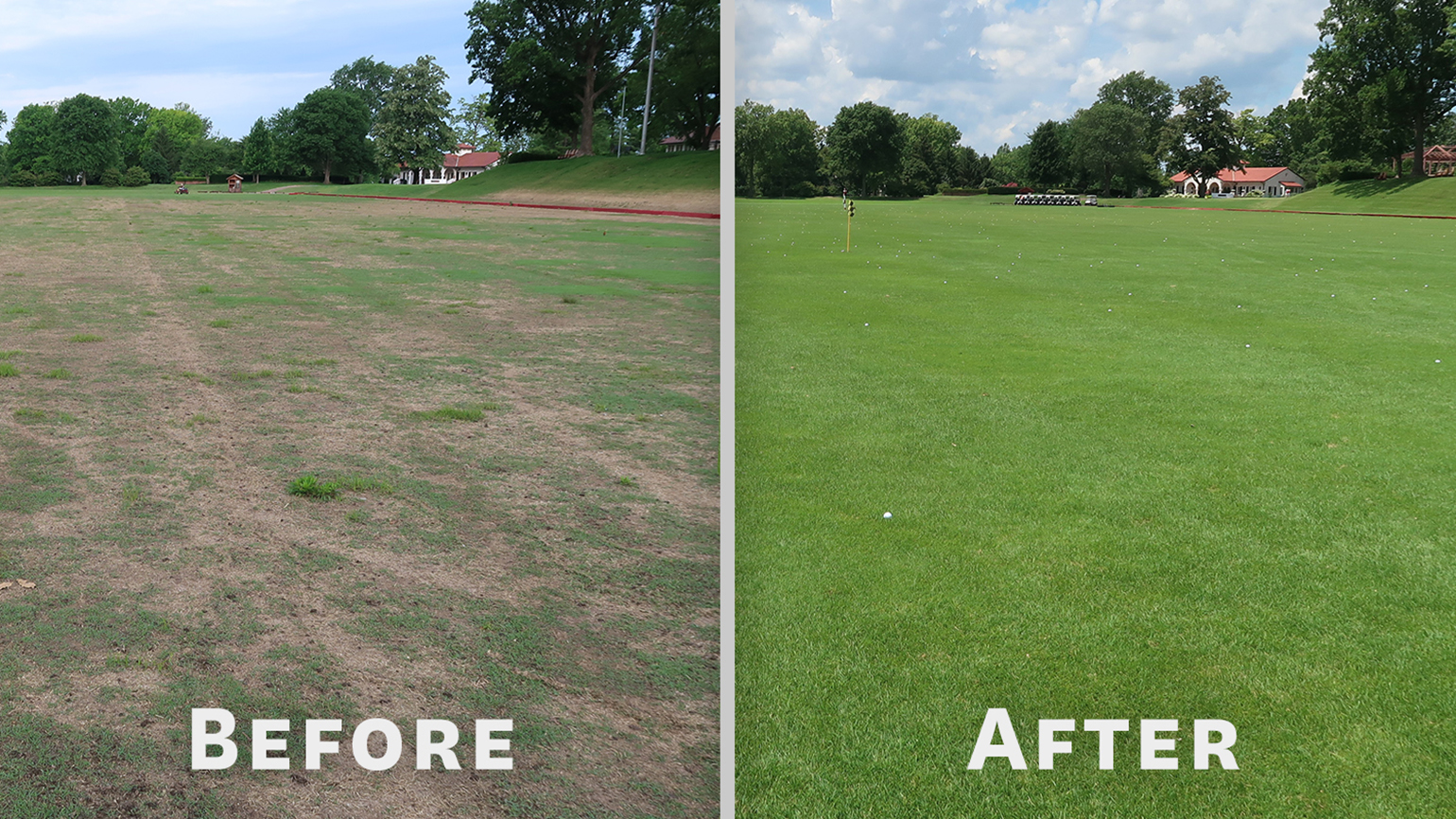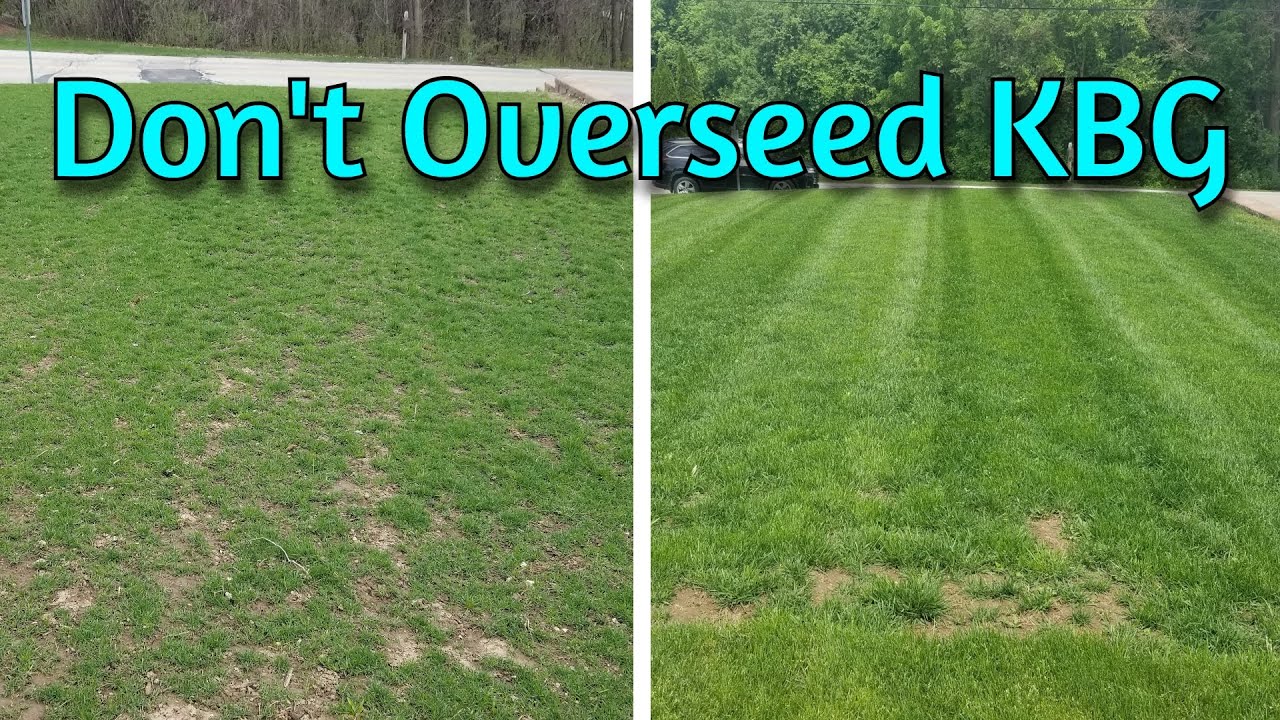To overseed Kentucky Bluegrass, prepare the lawn by mowing it short and removing any debris. Then, spread a high-quality Kentucky Bluegrass seed evenly across the lawn and lightly rake it to ensure good seed-to-soil contact.
Water the lawn regularly to keep the soil moist until the new grass sprouts and establishes. Introducing new grass to an existing Kentucky Bluegrass lawn can improve its density and overall health. Overseeding is a simple and effective technique that involves spreading Kentucky Bluegrass seeds over an established lawn to fill in bare spots, increase thickness, and enhance its appearance.
By following a few steps and using the right approach, you can successfully overseed Kentucky Bluegrass and enjoy a lush and vibrant lawn. We will guide you through the process of overseeding Kentucky Bluegrass, providing you with all the information you need to achieve optimal results. Let’s get started with the basics.

Credit: www.usga.org
Why Overseeding Kentucky Bluegrass Is Important
Overseeding Kentucky Bluegrass is an important practice that can enhance the health and appearance of your lawn. By introducing new seeds into the existing turf, you can fill in bare spots and promote thicker, lusher growth. This process helps to rejuvenate the grass, making it more resistant to weeds, pests, and diseases.
Additionally, overseeding can improve the overall color and texture of the lawn, giving it a vibrant and uniform look. It also aids in reducing soil erosion and enhancing the ability of the grass to withstand foot traffic. With regular overseeding, you can maintain a beautiful and resilient Kentucky Bluegrass lawn throughout the year.
So, consider incorporating overseeding into your lawn care routine to enjoy the numerous benefits it offers.
When Is The Best Time To Overseed Kentucky Bluegrass?
Choosing the perfect time to overseed Kentucky Bluegrass is essential for successful results. You need to understand the optimal season for overseeding and take into account various factors. These factors may include the current condition of your lawn, the climate in your region, and the specific requirements of the Kentucky Bluegrass variety you have.
Generally, the best time to overseed this type of grass is in the early fall. This season provides cooler temperatures and ample moisture, which promotes optimal germination and establishment of new grass seed. It’s important to avoid overseeding during extremely hot or cold periods, as these conditions can negatively impact seed growth.
By carefully considering these factors, you can ensure a healthy and vibrant lawn with your Kentucky Bluegrass overseeding project.
Step-By-Step Guide To Overseeding Kentucky Bluegrass
Overseeding Kentucky bluegrass requires proper preparation, seed selection, and seeding techniques for optimal results. Begin by ensuring your lawn is ready for overseeding, with a well-maintained turf and loosened soil. Next, carefully choose the right Kentucky bluegrass seed for your lawn’s needs.
When seeding, follow the recommended rates and application methods to promote maximum germination. Remember to water the area regularly and keep it moist for successful growth. In the weeks following overseeding, continue to care for the new grass with proper mowing, watering, and fertilization.
By following these steps, you can achieve a healthier, thicker, and more vibrant Kentucky bluegrass lawn.
Common Mistakes To Avoid When Overseeding Kentucky Bluegrass
When overseeding Kentucky Bluegrass, it is important to avoid common mistakes that can hinder the process. One mistake to avoid is overusing or underusing seed, as this can result in uneven growth. Another mistake is neglecting to properly prepare the soil before overseeding, which can lead to poor germination.
It’s crucial to ensure that the soil is properly aerated and free of debris. Additionally, watering plays a vital role in the success of overseeding. One should avoid overwatering, as it can lead to fungal diseases, and also not underwater, as this can result in poor seed germination.
Finding the right balance is key. By avoiding these common mistakes, you can achieve successful overseeding of Kentucky Bluegrass and enjoy a lush, healthy lawn.
Troubleshooting Common Issues With Overseeding Kentucky Bluegrass
Overseeding Kentucky Bluegrass can sometimes come with its fair share of challenges, especially when it comes to patchy or uneven growth. To tackle this issue, it’s essential to ensure proper seed-to-soil contact by raking the lawn gently before overseeding. Additionally, keeping the soil consistently moist by watering deeply and frequently can promote even germination.
When combating weed competition during overseeding, applying a pre-emergent herbicide will help prevent unwanted weed growth. Rejuvenating thin or damaged areas of the lawn after overseeding can be done by overseeding those areas again or using lawn repair mixtures. Regular maintenance, such as proper mowing and fertilization, is also crucial in promoting healthy growth and preventing future patchiness.
By following these troubleshooting steps, you can achieve a lush and beautiful Kentucky Bluegrass lawn.
Caring For Newly Overseeded Kentucky Bluegrass
Caring for newly overseeded Kentucky bluegrass involves proper watering techniques, mowing height determination, and effective fertilization and weed control strategies. To promote healthy growth, water the lawn lightly and frequently, ensuring the soil remains moist but not saturated. Adjust the mower blades to a higher setting to prevent damage to the new grass and encourage strong root development.
Applying a balanced fertilizer with a high phosphorus content will further enhance the establishment of the overseeded Kentucky bluegrass. It is crucial to choose weed control methods that are safe for the new grass, such as using pre-emergent herbicides and manually removing weeds.
By following these best practices, you can ensure the success of your newly overseeded Kentucky bluegrass lawn, resulting in a lush and vibrant yard.
Maintaining A Healthy Kentucky Bluegrass Lawn
Regular lawn care tasks are essential for maintaining a healthy Kentucky bluegrass lawn. To ensure long-term health, it is important to perform seasonal maintenance practices for optimal growth and color. These practices include proper watering, fertilizing, and mowing techniques. Adequate watering will keep the grass hydrated and prevent it from drying out.
Fertilizing helps provide the necessary nutrients for the bluegrass to thrive. When mowing, it is crucial to follow the recommended height and frequency to promote healthy growth. Trimming the grass too short can damage the root system and leave it vulnerable to diseases and weeds.
By implementing these regular maintenance tasks, you can enjoy a lush and vibrant Kentucky bluegrass lawn throughout the year.
Frequently Asked Questions Of How To Overseed Kentucky Bluegrass
How Do I Overseed Kentucky Bluegrass?
To overseed Kentucky Bluegrass, mow your lawn short, remove debris, and rake the soil lightly. Then, spread the seed evenly using a spreader. Water lightly and frequently to keep the soil moist until the new grass germinates. Avoid heavy traffic on the lawn until the new grass is well-established.
When Is The Best Time To Overseed Kentucky Bluegrass?
The best time to overseed Kentucky Bluegrass is during the fall months when temperatures are cooler but the soil is still warm. Aim for late August to mid-September. This allows the new grass to establish strong roots before the winter months and gives it a head start in the spring.
What Is The Recommended Seeding Rate For Overseeding Kentucky Bluegrass?
The recommended seeding rate for overseeding Kentucky Bluegrass is 3 to 5 pounds of seed per 1,000 square feet. Use a higher rate for areas with thin or bare spots and a lower rate for areas with existing grass. Following the recommended rate ensures proper seed distribution and maximizes germination success.
How Often Should I Water Newly Overseeded Kentucky Bluegrass?
After overseeding Kentucky Bluegrass, water lightly and frequently to keep the soil moist. Aim for watering 2 to 3 times a day for short durations, enough to keep the soil consistently damp. Avoid overwatering, as it can lead to disease and shallow root growth.
Gradually decrease watering frequency as the grass establishes.
Conclusion
Overseeding Kentucky bluegrass is a crucial step in maintaining a healthy and vibrant lawn. By following the proper techniques, such as preparing the soil, choosing the right seed, and implementing the correct seeding method, you can ensure successful overseeding. Remember to mow your lawn to the recommended height and avoid excessive watering during the germination period.
Regular maintenance and care, including fertilization and weed control, will further enhance the growth and density of your bluegrass. Additionally, by overseeding regularly, you can rejuvenate your lawn and prolong its lifespan. So, don’t wait any longer – get started on overseeding your Kentucky bluegrass today and enjoy a lush and beautiful lawn that will be the envy of the neighborhood.
Get ready to relish the rewards of your hard work and dedication!

